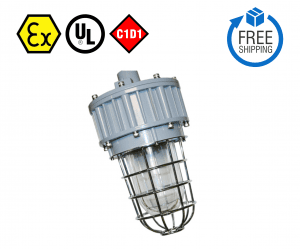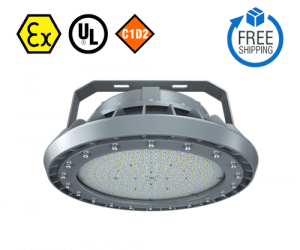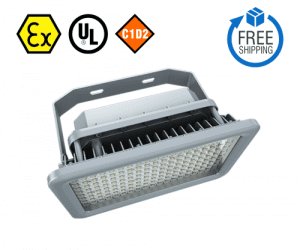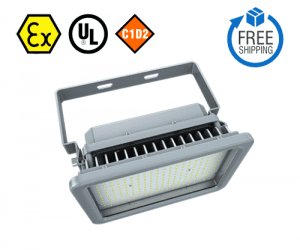Description
MATERIALS
- Housing: Aluminum
- Bolts: Stainless steel
- Mounting Sling: Stainless steel
- Sign Panel: Glass
KEY FEATURES
- Working Temperature: -20°C ~+60°C
- High durability and reliability
- Label content customizable
- Low working wattage for energy saving
- High durability and reliability.
- Low working wattage for energy saving
- High leak proof up to IP66
- Edge-lit sign
- Long lifespan up to 50,000 hours
- Emergency time up to 180 minutes
- Pendant, wall and end bracket mounts provide universal installation options
- 3/4"NPT or M25 conduit hubs
Specifications
| Model | Wattage | CCT | Voltage | Warranty | Back-up Battery Time |
|---|---|---|---|---|---|
| EX-3W JYZDA | 3W | Red/Green | AC: 100-277V
AC/DC:12-36V |
5 Years | 3 Hours |
| EX-5W JYZDA | 5W |
Download Product Cut Sheet
Knowledge Base
What are the different types of emergency lighting?
1). There are two main types of emergency lighting: (i) emergency escape lighting; (ii) standby lighting (p. 2). Emergency escape lighting is defined as “that part of emergency lighting that is provided to enable safe exit in the event of failure of the normal supply”.
What are the two modes of emergency lighting?
Emergency luminaires come in two modes of operation: maintained and non-maintained.
What is the difference between maintained and sustained emergency lights?
Non-maintained lights turn on only during a power failure. Maintained lights work continuously and continue to illuminate during a power failure, enabling them to function as both a standard light and an emergency light.
What is the difference between escape lighting and emergency lighting?
A noticeable difference between the emergency and escape lighting is the operating time.. The escape lighting should have a longer operating time of 2 hours from the basic lighting failure. For the emergency lighting, the required time is at least 1 hour.
What is Class 1 Division 1 LED lighting?
Class 1 Div 1 LED Lighting (C1D1) is explosion-rated lighting designed to work in explosive environments where hazardous conditions and concentrations of flammable combustible vapors, liquids or gases, are always present. Class 1 Areas are defined as groups and are categorized by the type of material found.
What is class1 luminaire?
Class 1 Division 1 LED lighting is used in industrial buildings to reduce the risk of high voltage equipment igniting flammable substances. Typical Class 1 Division 1 lights are designed to be explosion proof, making them suitable for exposure to these volatile chemicals.
What is a Class 1 Div 1 area?
A Class I, Division 1 area encompasses the combination of Zone 0 and Zone 1 areas. An area where ignitable concentrations of flammable gases, vapors or liquids are present continuously or for long periods of time under normal operating conditions.
What is the difference between ATEX and explosion proof?
ATEX and ex-proof classifications help manufacturers select and install equipment for potentially explosive atmospheres. ATEX is used in Europe, whereas Ex-Proof is used in North America and Canada. The process environment and properties of any materials that will be present need to be ascertained.
What makes a light explosion proof?
To be certified, explosion-proof lights typically will be made of durable, non-sparking material, a very thick glass globe over the bulb, and other features to ensure that the worker and the surrounding environment remains safe should an ignition occur inside the light.
Where can you use explosion proof lighting?
Hazardous Area/Explosion Proof lights are available for a wide variety of applications. Examples include linear wall/ceiling fixtures, flood lights, dock lights, high bay lights, wall packs and shop lights.
What class is explosion proof?
There are three classes of explosion proof lights known as Class I, Class II, and Class III. These are the broadest sense in which explosion proof lights are distinguished from each other. The classes are each broken down further into two separate divisions.
Is explosion proof the same as intrinsically safe?
Therefore, Intrinsically Safe means that an apparatus, such as a temperature transmitter is not capable of causing an explosion. Explosion Proof means that should an explosion occur, it will be contained within an enclosure.
What is ATEX Zone 1 certification?
Zone 1 – Explosive mixtures are present intermittently. Category 2 or 1 equipment required.
Zone 2 – Explosive mixtures are present abnormally or infrequently. Category 3, 2, or 1 equipment required.
Can you use Ex e in Zone 1?
Hazardous area Ex e isolators provide safe electrical isolation for low voltage power in Zone 1 & Zone 2 (gases) and Zone 21 & Zone 22 (dusts) explosive atmospheres.
What is explosion proof type?
Ex-Proof housing contains either cast aluminum or stainless steel, with sufficient mass and strength to subdue ignition, should flammable substances penetrate the internal electronics.







